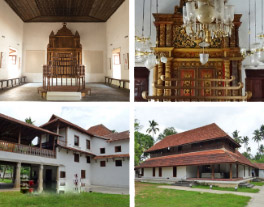Sahodaran Ayyappan Museum

On May 29, 1917, a humble abode situated in Cherai, Ernakulam district, became the site of a significant act of defiance against social discrimination and the cruel caste system that characterized the era. Ayyappan, a courageous young man from the Ezhava community, dared to challenge the entrenched practice of untouchability and advocated for misrabhojanam, a revolutionary act where individuals from different castes sat together to share a meal—an act considered blasphemous at that time.
Through his initiative called Sahodara prasthanam, meaning the "brotherhood movement," Ayyappan embarked on a mission to advance his cause, and soon gained recognition as "Sahodaran" Ayyappan (1889-1968). Today, that very house is renowned as the Sahodaran Ayyappan Museum, paying tribute to the memory of Sahodaran Ayyappan, a prominent social reformer, journalist, activist, and a devoted disciple of Sree Narayana Guru.
The museum offers visitors a captivating blend of interactive and traditional exhibitions, providing an authentic and immersive experience. The museum complex comprises traditional thatched-roof houses woven from coconut leaves, including the very house in which Sahodaran Ayyappan was born. Its location offers a scenic waterfront view of the Periyar river, adjacent to the Muziris Heritage Project boat jetty. Within its walls, the museum chronicles the life and achievements of Sahodaran Ayyappan, shedding light on the social movements he spearheaded to combat the prevalent caste discriminations that plagued Kerala society during that time.
 Nearest railway station: Aluva, about 29 kms and Ernakulam, about 32 kms.
Nearest railway station: Aluva, about 29 kms and Ernakulam, about 32 kms. Nearest airport: Cochin International Airport, about 31 kms.
Nearest airport: Cochin International Airport, about 31 kms.
